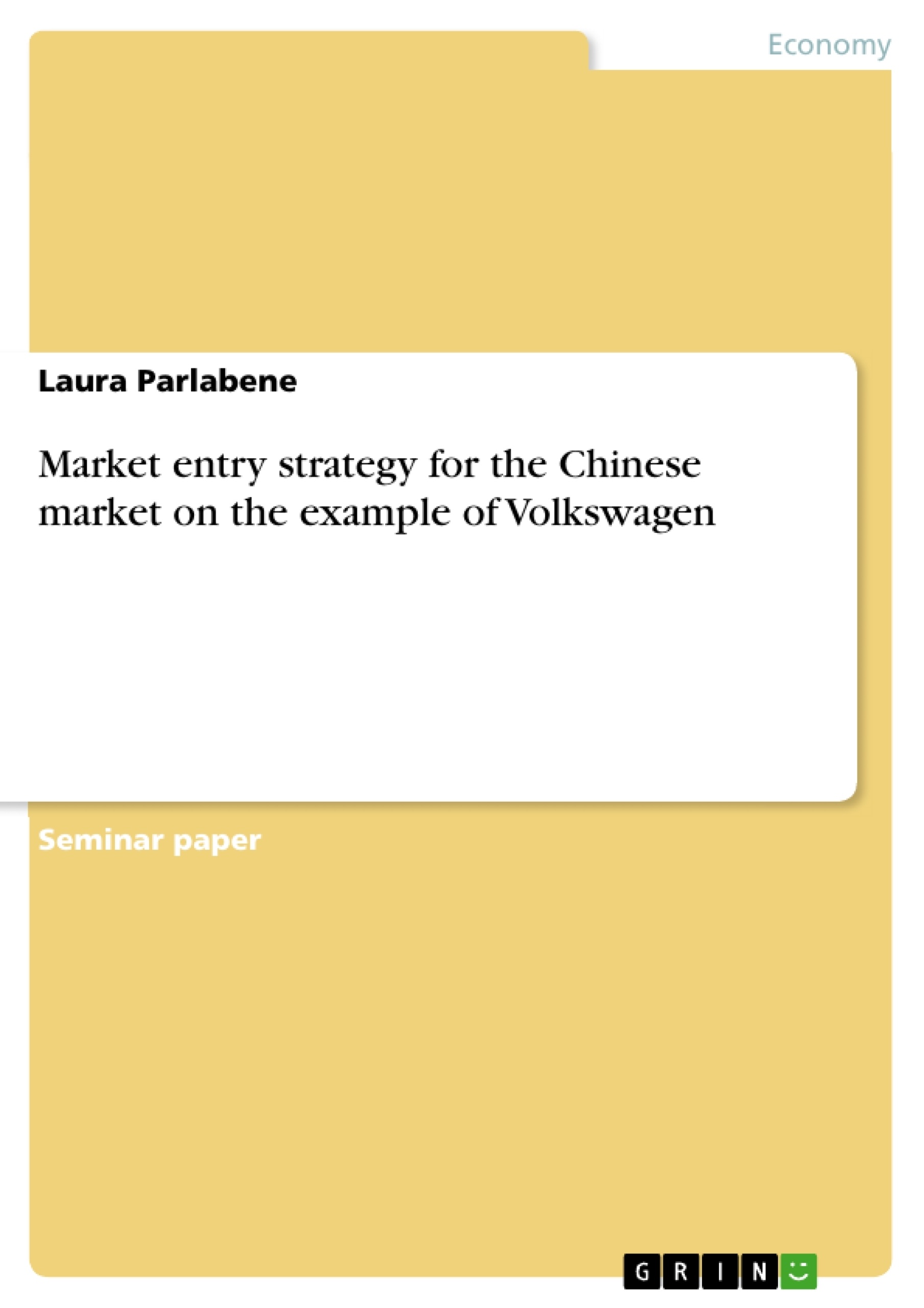During the last years the globalisation has increased the competition amongst the companies and made them more willing to enter foreign markets. Developing a market entry strategy is very complex and has long-term consequences for a company. Thus, choosing an adequate market entry strategy has an enormous importance.
The present term paper is concerned with international market entry strategies especially for the Chinese market on the example of Volkswagen.
In chapter two some theoretical basics of international market entry strategies are provided. In this sense, the term of international market entry strategy is defined and the motives for companies to enter foreign markets are analyzed.
In chapter three the development of a market entry strategy for the Chinese market is examined. Therefore, the significance of the Chinese market will be shown at the beginning. Afterwards, the timing and the location of market entry will be explained. Finally, three forms of market entry will be presented.
The fourth chapter creates a practical connection of the topic by explaining the market entry strategy of Volkswagen.
Table of Contents
- 1 Introduction
- 2 Theoretical basics of international market entry strategies
- 2.1 The term of international market entry strategy
- 2.2 Motives for companies to go international
- 3 Strategies to enter the Chinese market
- 3.1 Significance of the Chinese market
- 3.2 Timing of market entry: When to enter?
- 3.3 Location of market entry: Which market to enter?
- 3.4 Form of market entry: How to enter?
- 3.4.1 Representative Office in China
- 3.4.2 Chinese Joint Venture
- 3.4.3 Wholly owned subsidiary
- 4 Case study Volkswagen
- 4.1 Short profile of Volkswagen
- 4.2 Market entry strategy of Volkswagen
- 5 Conclusion
Objectives and Key Themes
This scientific paper analyzes the market entry strategy of Volkswagen in the Chinese market. It aims to provide a comprehensive overview of the theoretical foundations of international market entry strategies, including the motivations for companies to expand internationally. The paper also explores the specific strategies employed by Volkswagen to enter the Chinese market, examining the timing, location, and form of their entry.
- International Market Entry Strategies
- Motivations for International Expansion
- Chinese Market Entry Strategies
- Volkswagen's Market Entry Strategy
- Case Study Analysis
Chapter Summaries
- Chapter 1: Introduction - This chapter sets the context for the research by outlining the paper's objective and providing a brief overview of the market entry strategy of Volkswagen in China.
- Chapter 2: Theoretical basics of international market entry strategies - This chapter delves into the theoretical framework of international market entry strategies, covering key terms and concepts. It also explores the underlying motivations that drive companies to expand internationally.
- Chapter 3: Strategies to enter the Chinese market - This chapter focuses on the specific strategies employed by companies to enter the Chinese market. It examines factors such as the timing of entry, the selection of a suitable market location, and the various forms of market entry available.
- Chapter 4: Case study Volkswagen - This chapter provides a detailed analysis of Volkswagen's market entry strategy in China. It includes a brief overview of the company and its specific approach to entering the Chinese market.
Keywords
The main keywords and focus topics of this paper include international market entry strategies, motives for international expansion, the Chinese market, market entry timing, location, and form, Volkswagen, case study analysis, and joint ventures.
- Quote paper
- Laura Parlabene (Author), 2012, Market entry strategy for the Chinese market on the example of Volkswagen, Munich, GRIN Verlag, https://www.grin.com/document/204369



